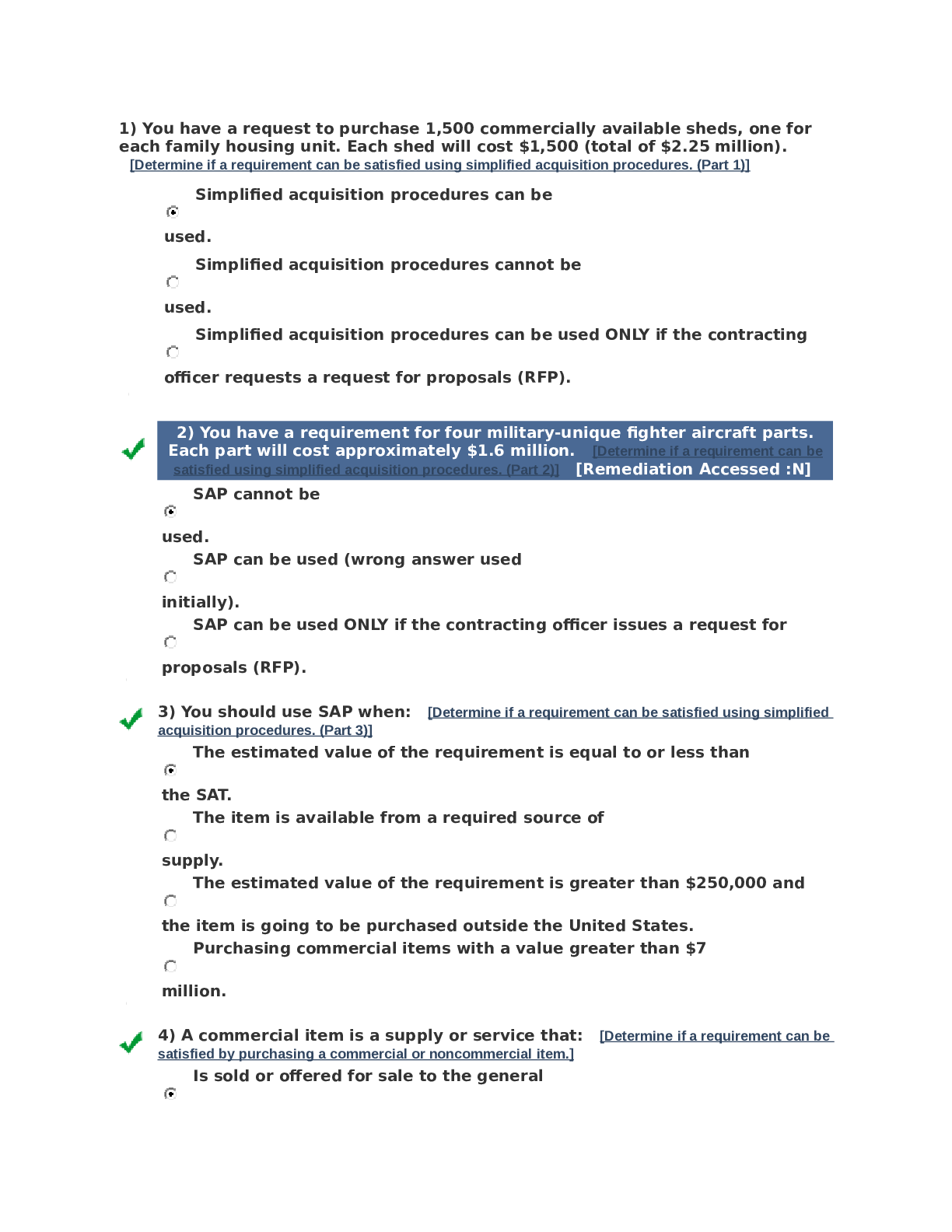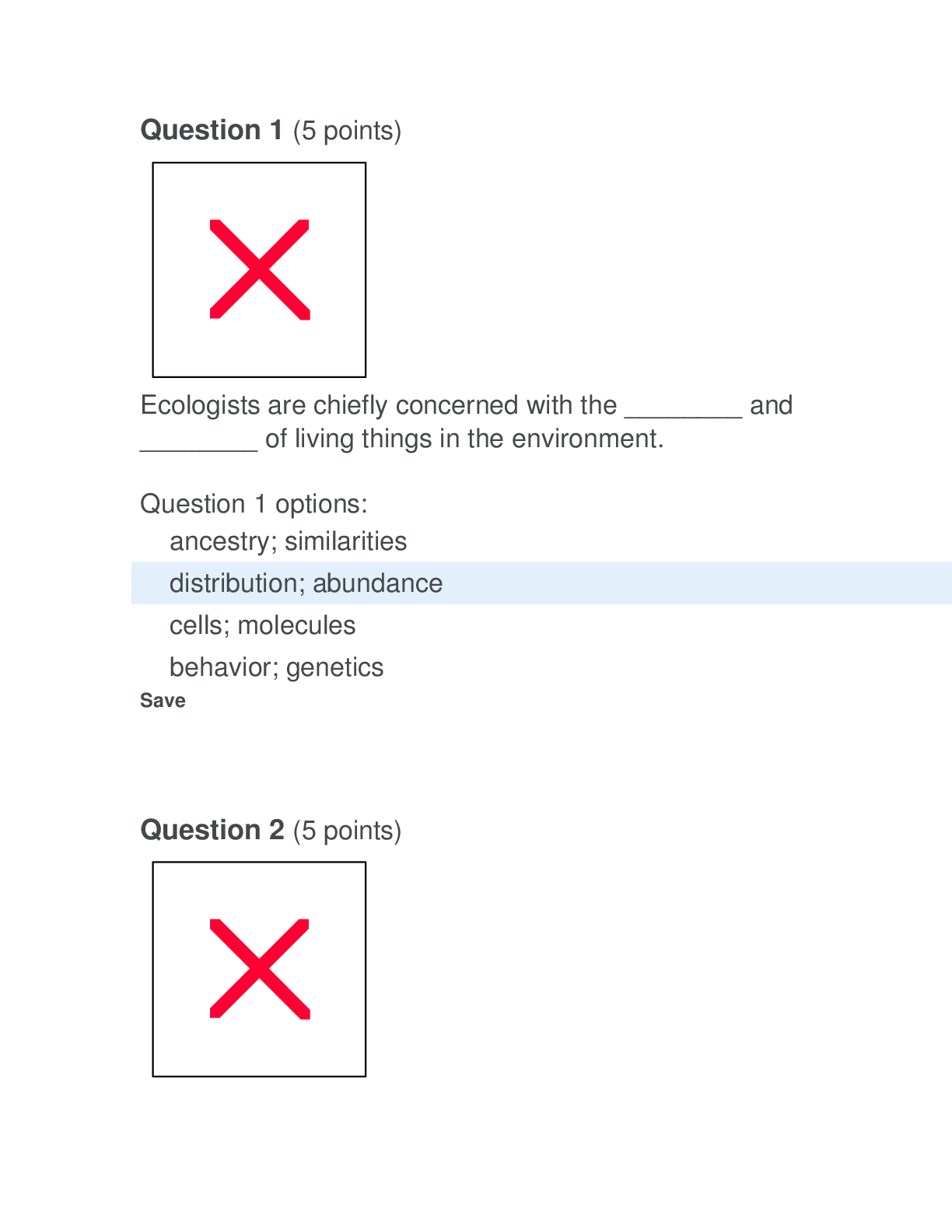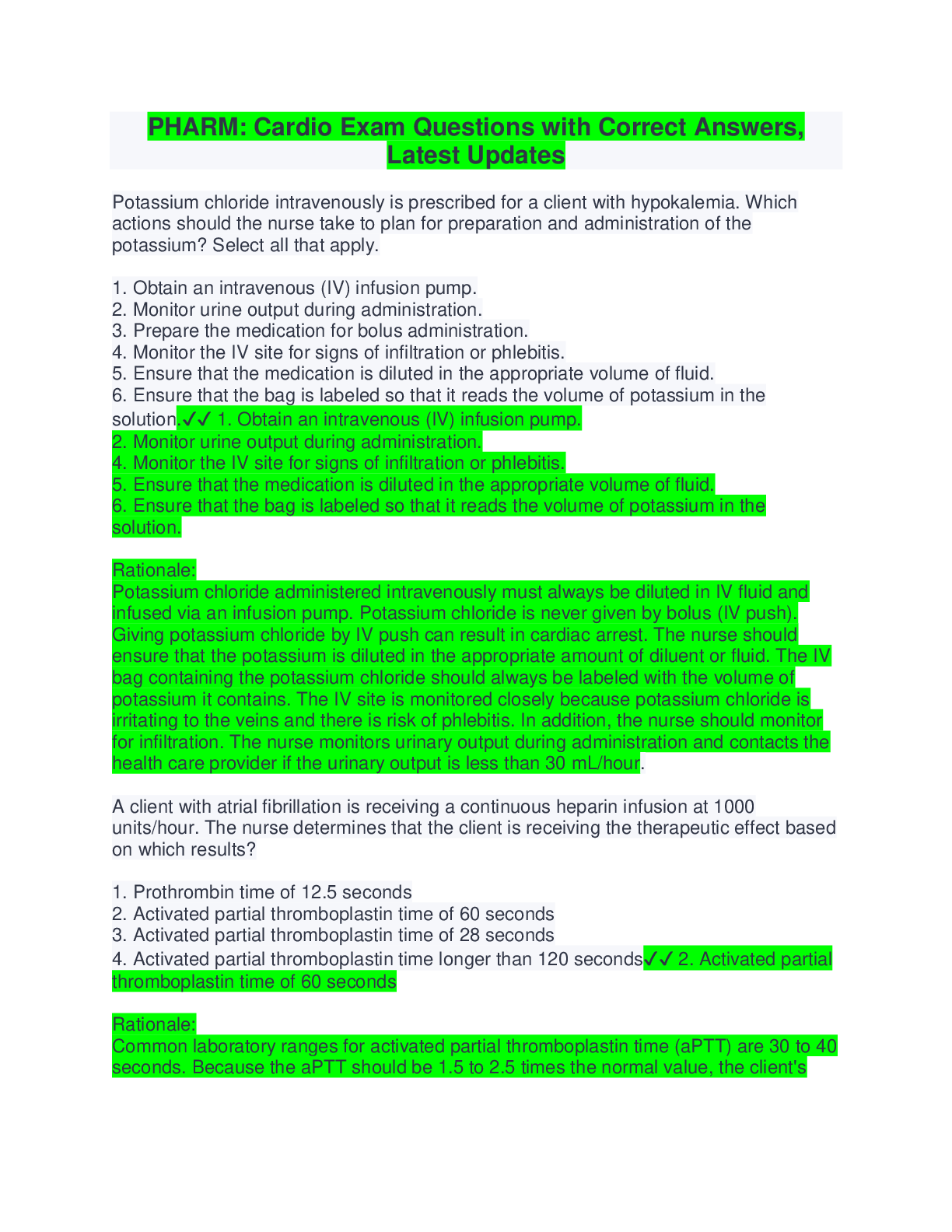*NURSING > QUESTIONS & ANSWERS > Chapter 42: Cardiovascular Dysfunction questions with correct answers to boost your grades (All)
Chapter 42: Cardiovascular Dysfunction questions with correct answers to boost your grades
Document Content and Description Below
Chapter 42: Cardiovascular Dysfunction MULTIPLE CHOICE 1. The nurse is assessing a child post–cardiac catheterization. Which complication might the nurse anticipate? a. Cardiac arrhythmia... c. Congestive heart failure b. Hypostatic pneumonia d. Rapidly increasing blood pressure 2. José is a 4-year-old child scheduled for a cardiac catheterization. Preoperative teaching should be: a. Directed at his parents because he is too young to understand. b. Detailed in regard to the actual procedures so he will know what to expect. c. Done several days before the procedure so that he will be prepared. d. Adapted to his level of development so that he can understand. 3. The nurse is caring for a school-age girl who has had a cardiac catheterization. The child tells the nurse that her bandage is “too wet.” The nurse finds the bandage and bed soaked with blood. The most appropriate initial nursing action is to: a. Notify the physician. b. Apply a new bandage with more pressure. c. Place the child in the Trendelenburg position. d. Apply direct pressure above the catheterization site. 4. Which defect results in increased pulmonary blood flow? a. Pulmonic stenosis c. Atrial septal defect b. Tricuspid atresia d. Transposition of the great arteries 5. Which structural defects constitute tetralogy of Fallot? a. Pulmonic stenosis, ventricular septal defect, overriding aorta, right ventricular hypertrophy b. Aortic stenosis, ventricular septal defect, overriding aorta, right ventricular hypertrophy c. Aortic stenosis, atrial septal defect, overriding aorta, left ventricular hypertrophy d. Pulmonic stenosis, ventricular septal defect, aortic hypertrophy, left ventricular hypertrophy 6. What is best described as the inability of the heart to pump an adequate amount of blood to the systemic circulation at normal filling pressures? a. Pulmonary congestion c. Congestive heart failure b. Congenital heart defect d. Systemic venous congestion 7. A clinical manifestation of the systemic venous congestion that can occur with congestive heart failure is: a. Tachypnea. c. Peripheral edema. b. Tachycardia. d. Pale, cool extremities. 8. A beneficial effect of administering digoxin (Lanoxin) is that it: a. Decreases edema. c. Increases heart size. b. Decreases cardiac output. d. Increases venous pressure. 9. Which drug is an angiotensin-converting enzyme (ACE) inhibitor? a. Captopril (Capoten) c. Spironolactone (Aldactone) b. Furosemide (Lasix) d. Chlorothiazide (Diuril) 10. The nurse is evaluating a child who is taking digoxin for her cardiac condition. The nurse is cognizant that a common sign of digoxin toxicity is: a. Seizures. c. Bradypnea. b. Vomiting. d. Tachycardia. 11. The parents of a young child with congestive heart failure tell the nurse that they are “nervous” about giving digoxin. The nurse’s response should be based on knowing that: a. It is a safe, frequently used drug. b. It is difficult to either overmedicate or undermedicate with digoxin. c. Parents lack the expertise necessary to administer digoxin. d. Parents must learn specific, important guidelines for administration of digoxin. 12. As part of the treatment for congestive heart failure, the child takes the diuretic furosemide. As part of teaching home care, the nurse encourages the family to give the child foods such as bananas, oranges, and leafy vegetables. These foods are recommended because they are high in: a. Chlorides. c. Sodium. b. Potassium. d. Vitamins. 13. An 8-month-old infant has a hypercyanotic spell while blood is being drawn. The nurse’s firstaction should be to: a. Assess for neurologic defects. b. Place the child in the knee-chest position. c. Begin cardiopulmonary resuscitation. d. Prepare the family for imminent death. 14. The nurse is caring for a child with persistent hypoxia secondary to a cardiac defect. The nurse recognizes that a risk of cerebrovascular accidents (strokes) exists. An important objective to decrease this risk is to: a. Minimize seizures. c. Promote cardiac output. b. Prevent dehydration. d. Reduce energy expenditure. 15. Parents of a 3-year-old child with congenital heart disease are afraid to let their child play with other children because of possible overexertion. The nurse’s reply should be based on knowing that: a. The child needs opportunities to play with peers. b. The child needs to understand that peers’ activities are too strenuous. c. Parents can meet all the child’s needs. d. Constant parental supervision is needed to avoid overexertion. 16. When preparing a school-age child and the family for heart surgery, the nurse should consider: a. Not showing unfamiliar equipment. b. Letting child hear the sounds of an electrocardiograph monitor. c. Avoiding mentioning postoperative discomfort and interventions. d. Explaining that an endotracheal tube will not be needed if the surgery goes well. 17. Seventy-two hours after cardiac surgery, a young child has a temperature of 37.7 C (101 F). The nurse should: a. Keep the child warm with blankets. b. Apply a hypothermia blanket. c. Record the temperature on nurses’ notes. d. Report findings to physician. 18. An important nursing consideration when suctioning a young child who has had heart surgery is to: a. Perform suctioning at least every hour. b. Suction for no longer than 30 seconds at a time. c. Administer supplemental oxygen before and after suctioning. d. Expect symptoms of respiratory distress when suctioning. .......................................................................................continued................................................................................................. [Show More]
Last updated: 1 year ago
Preview 1 out of 34 pages
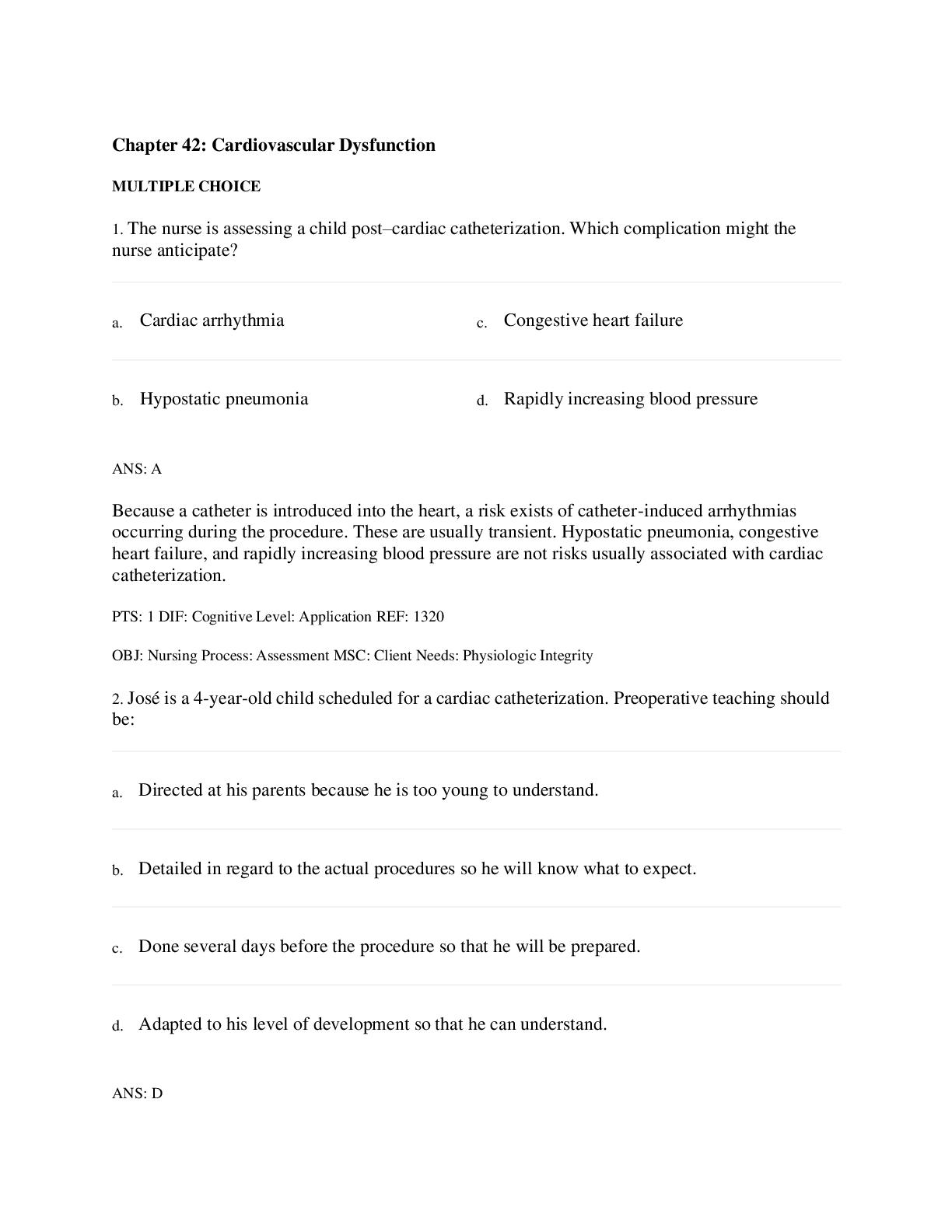
Reviews( 0 )
Document information
Connected school, study & course
About the document
Uploaded On
Nov 15, 2021
Number of pages
34
Written in
Additional information
This document has been written for:
Uploaded
Nov 15, 2021
Downloads
0
Views
49


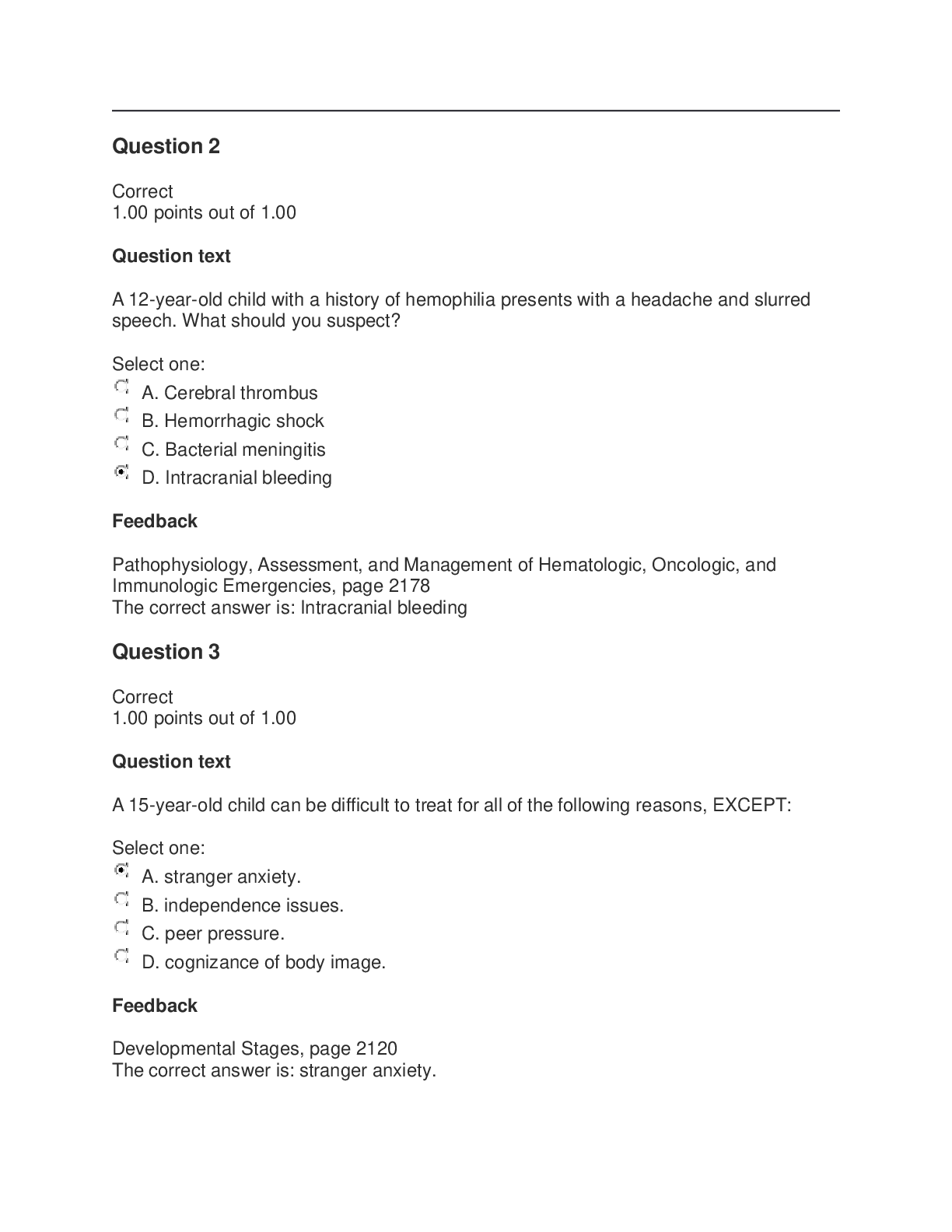







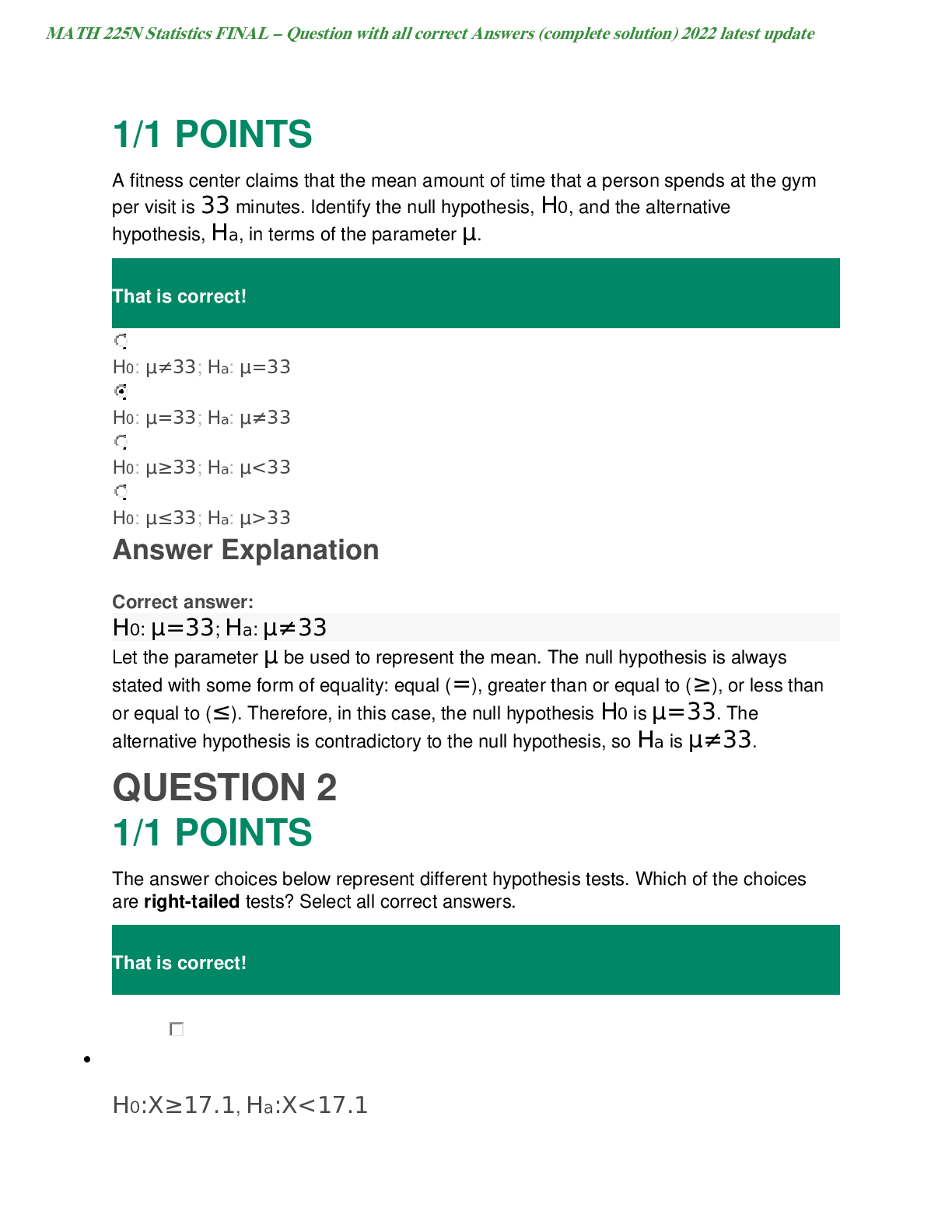
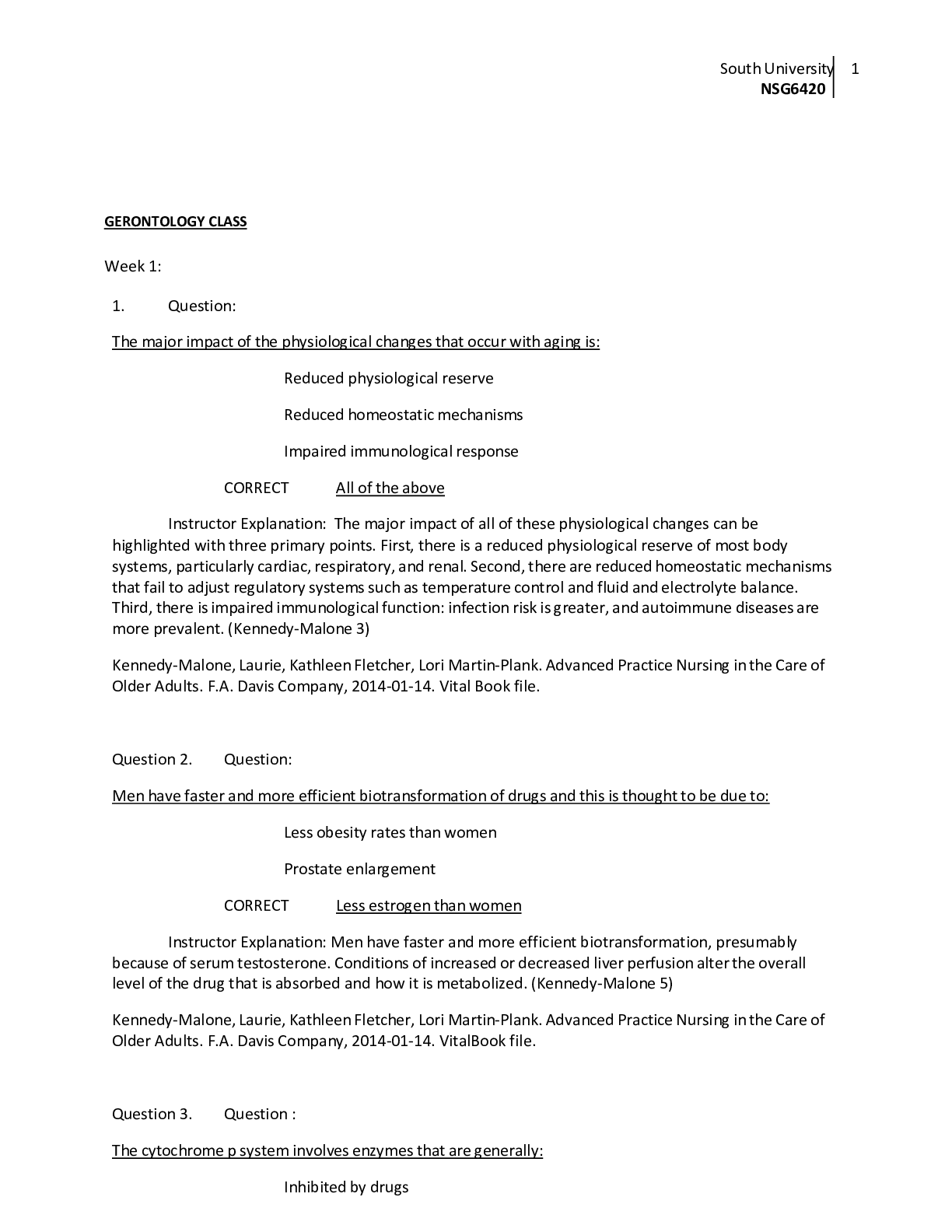

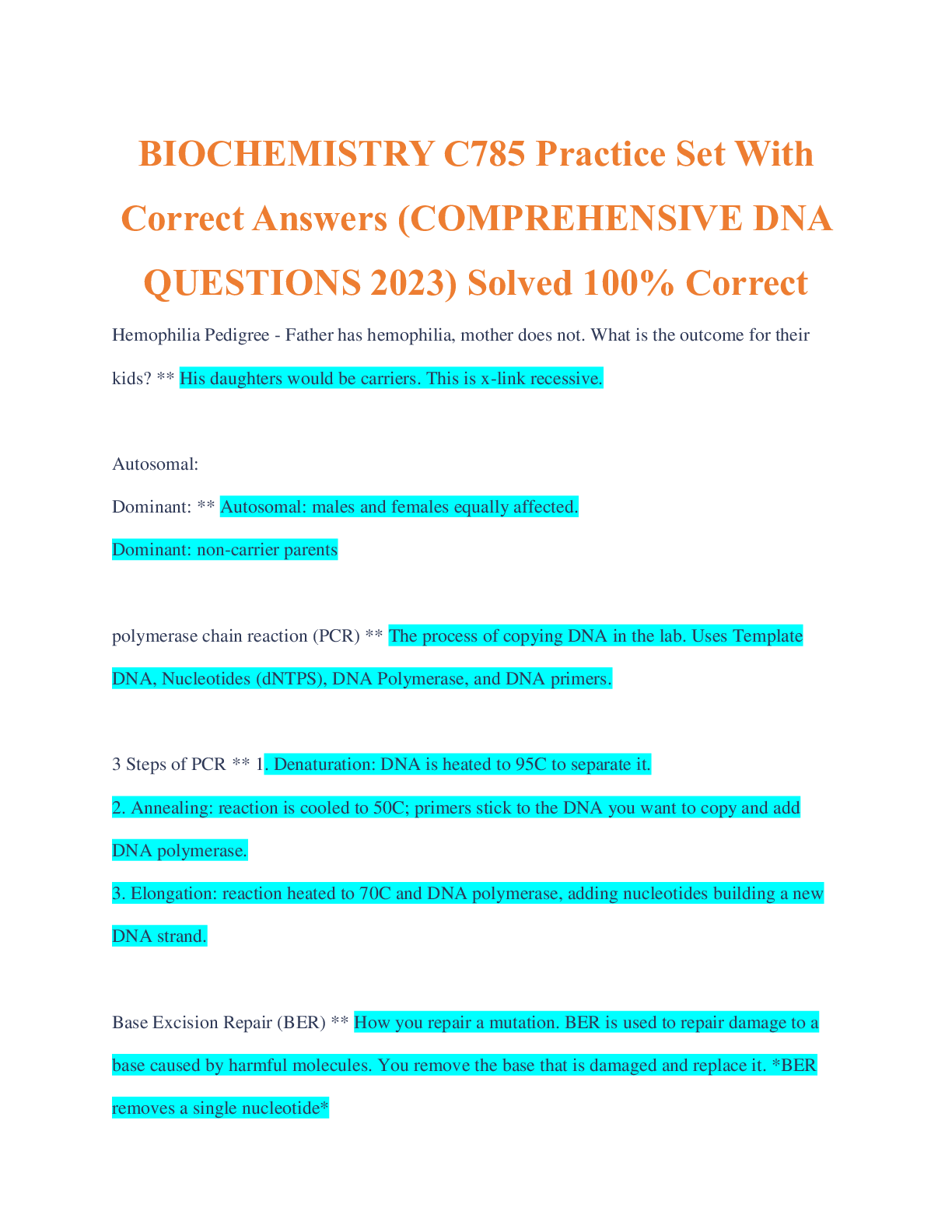
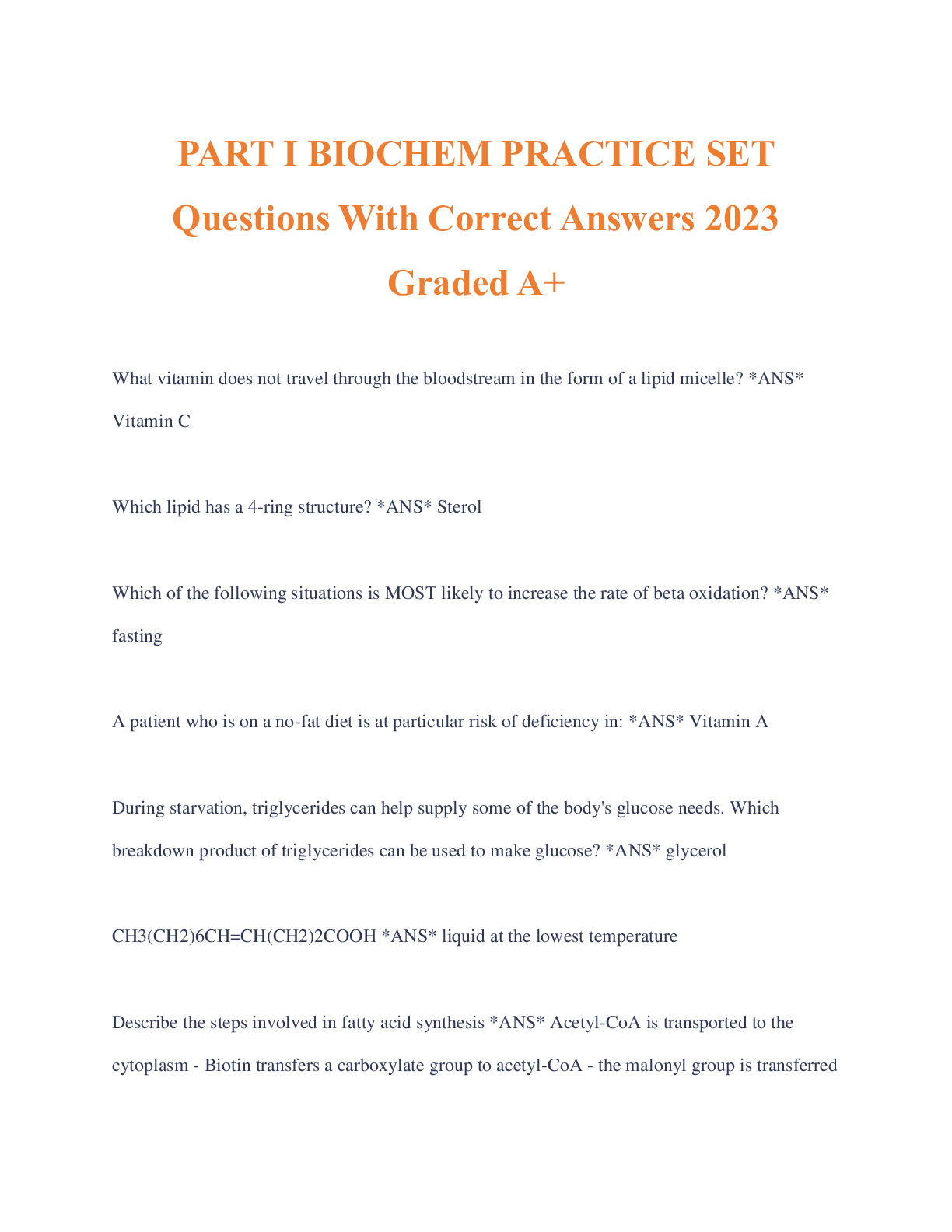
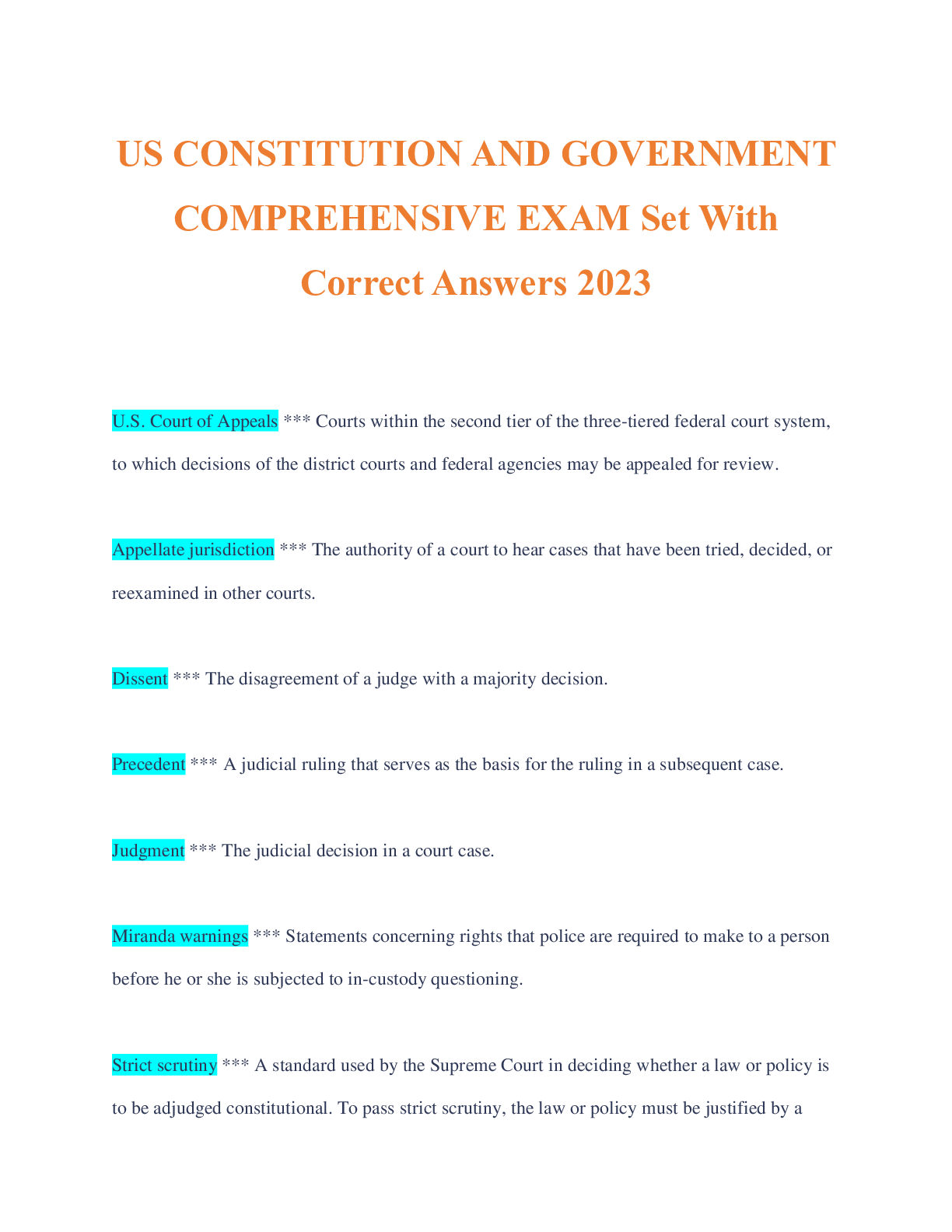
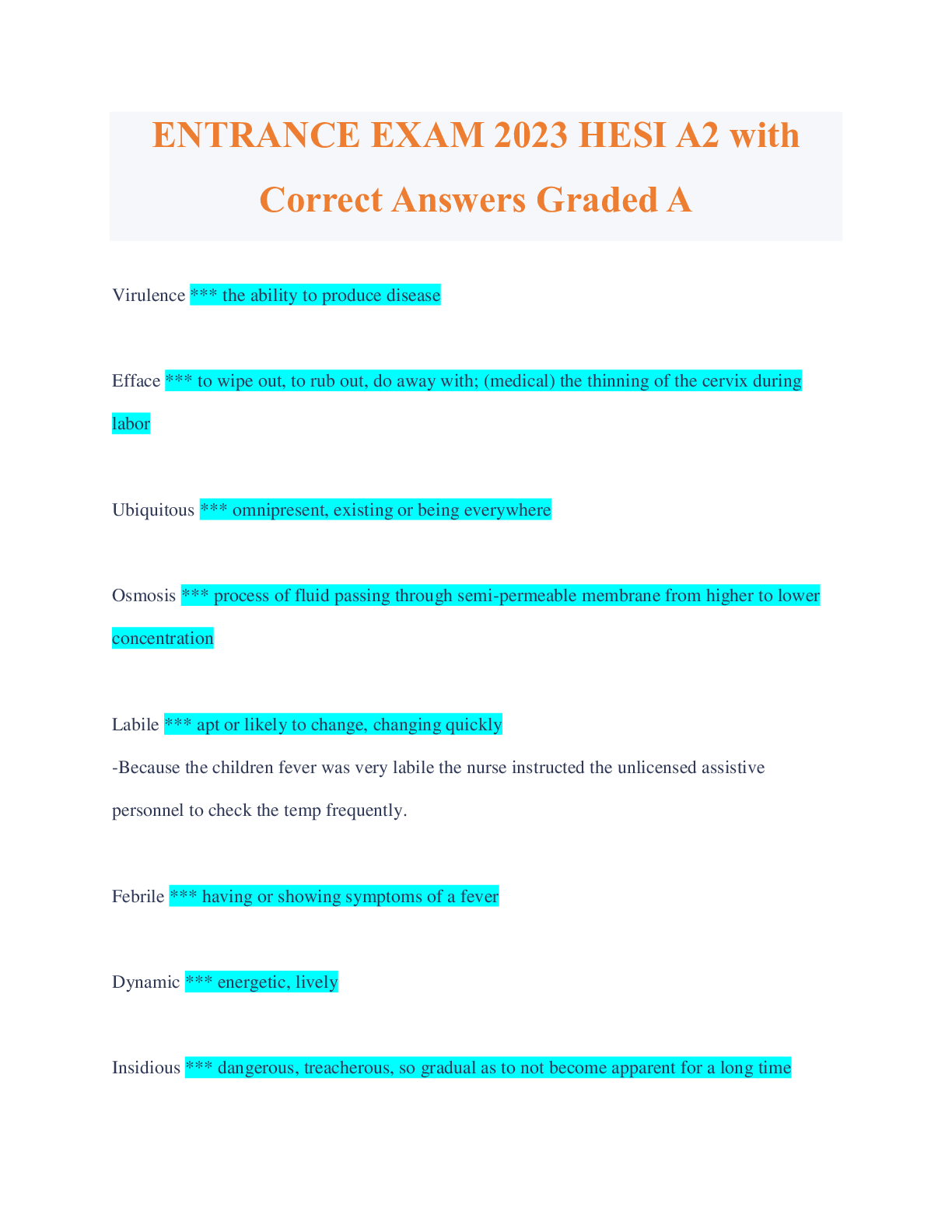


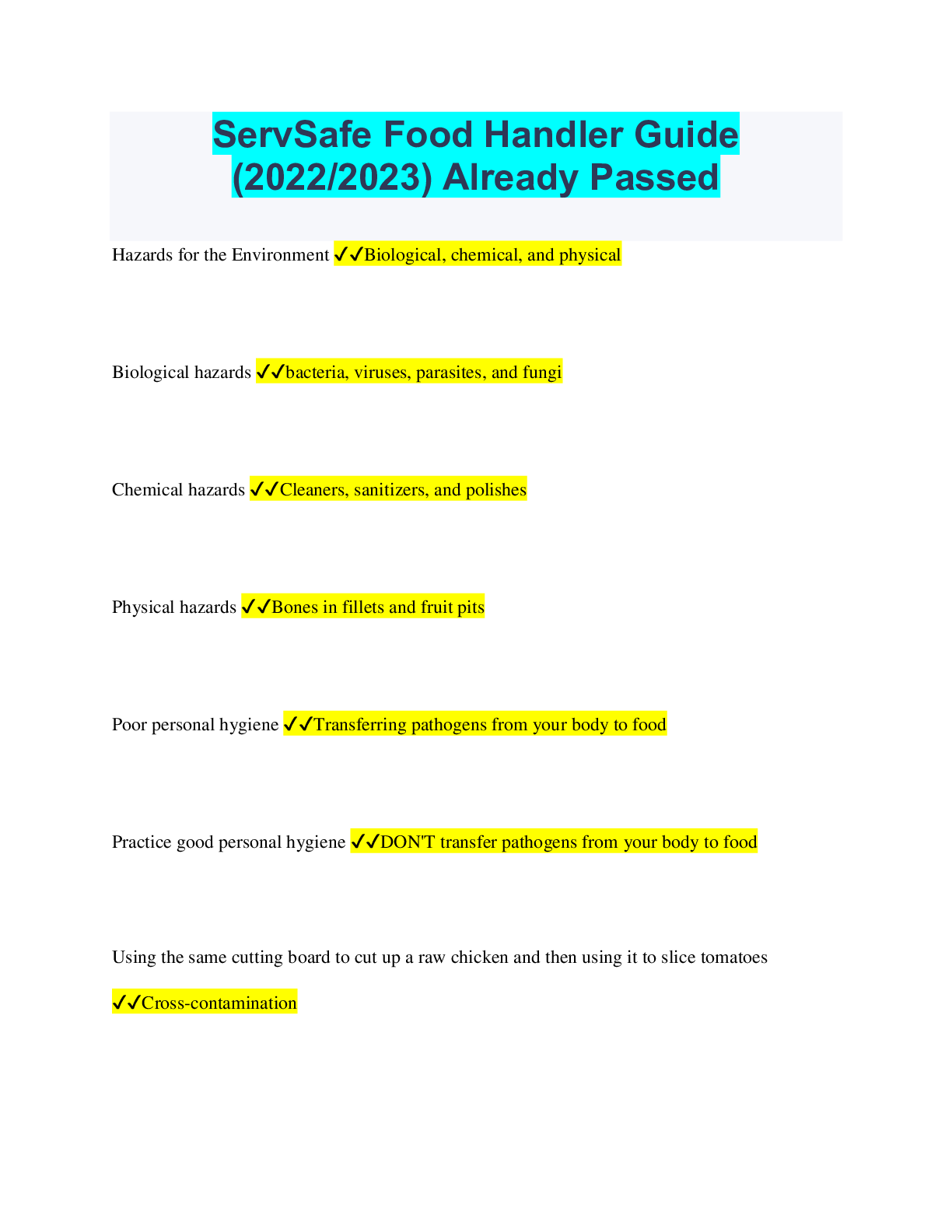
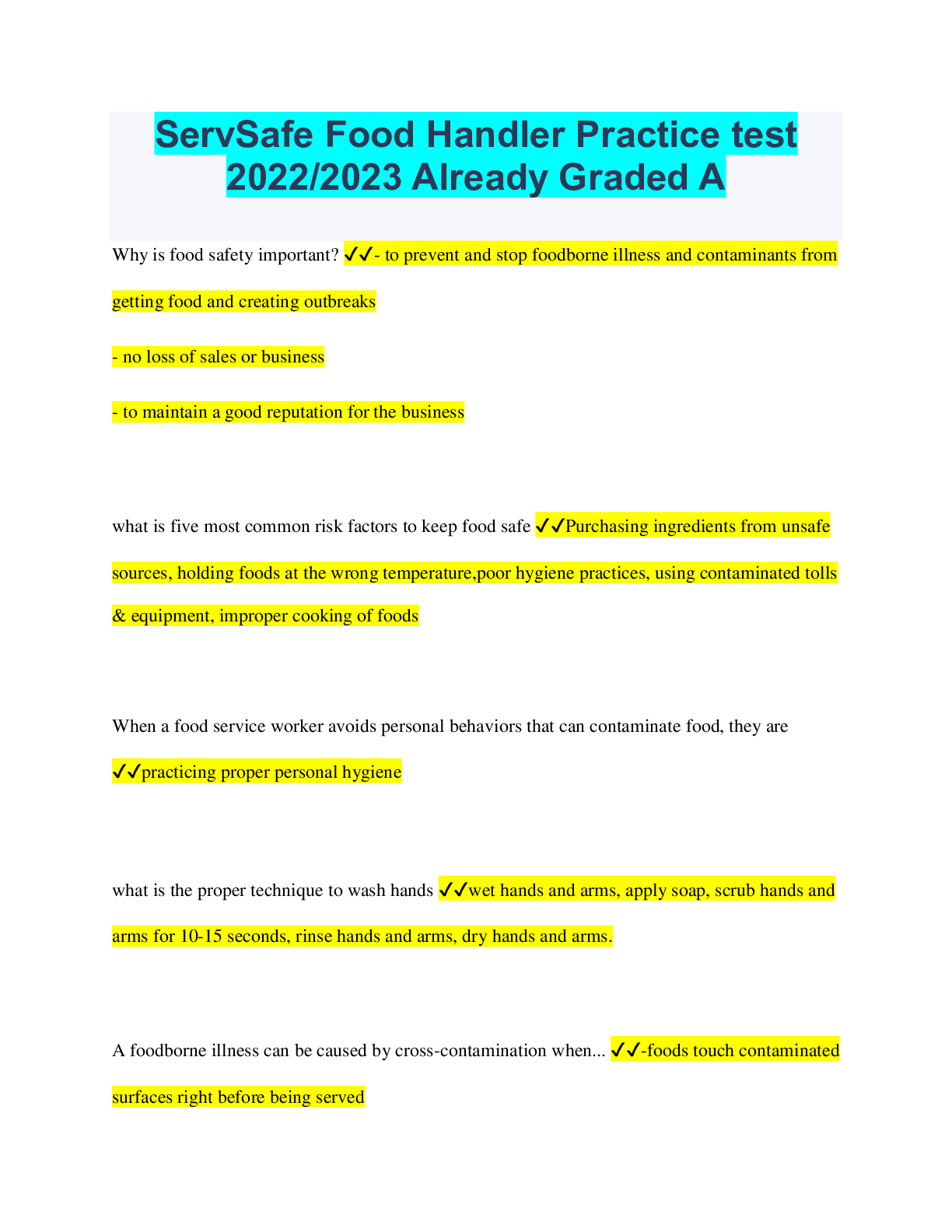
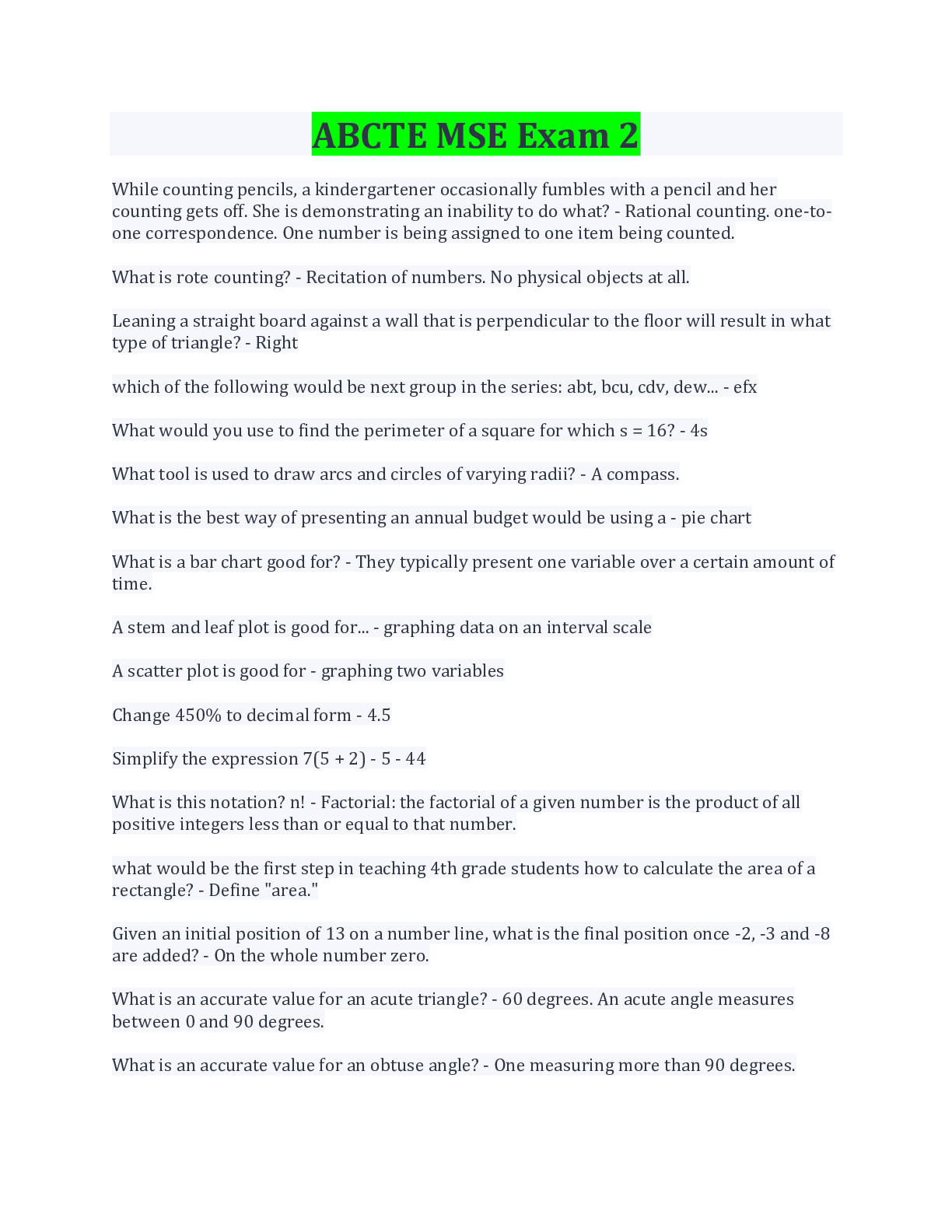


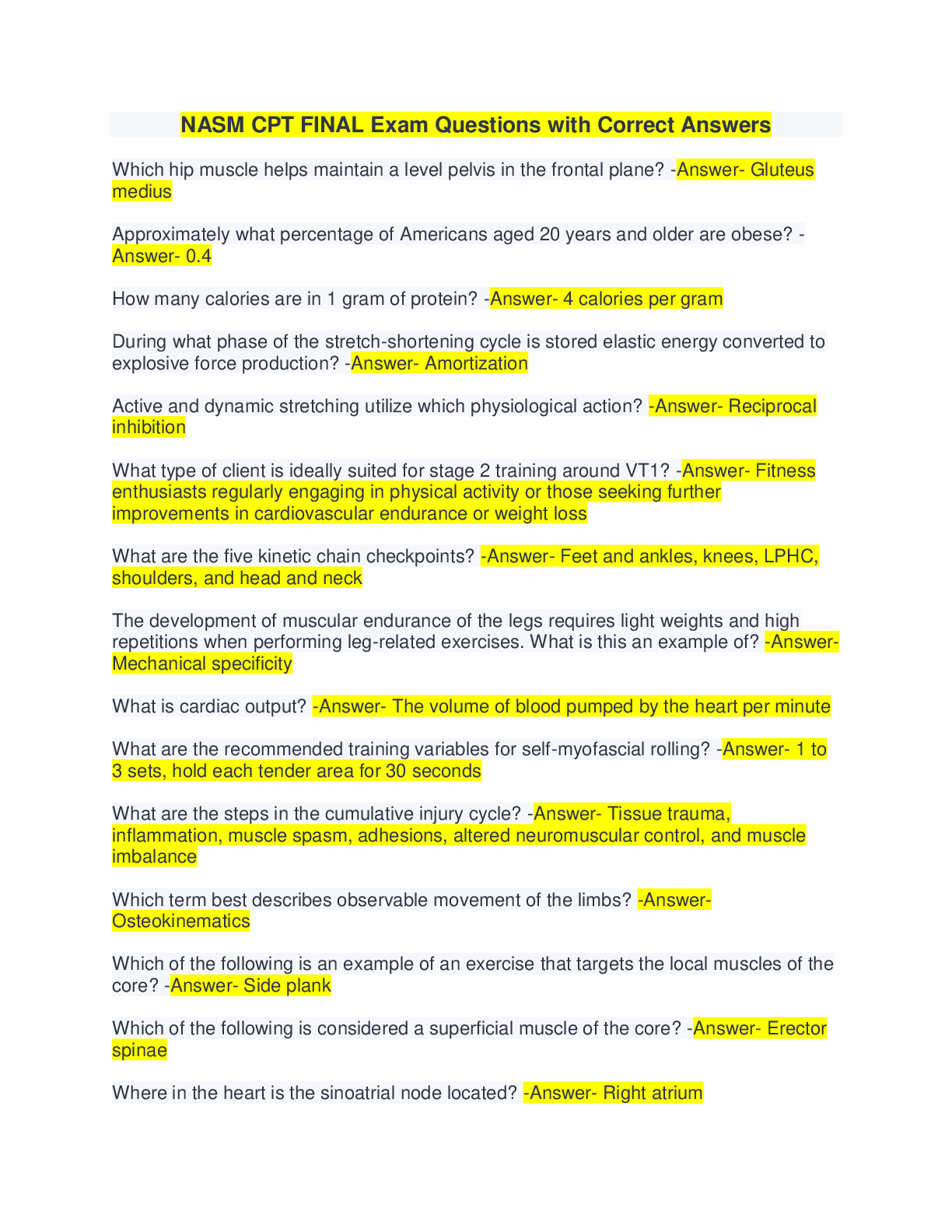
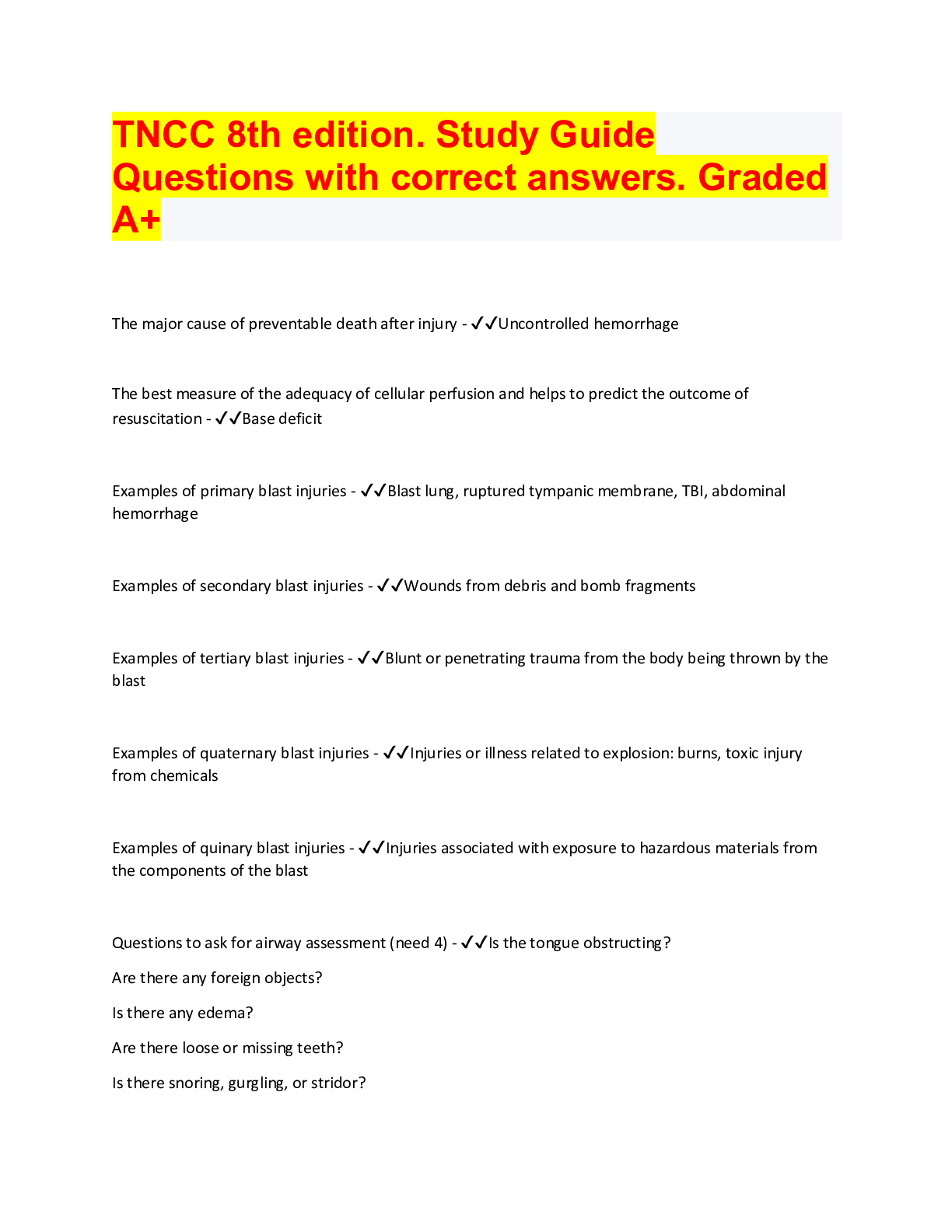


 Exam Preparation With Correct Answers Graded A+-1.png)
